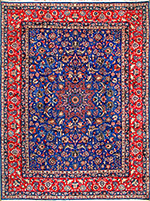Textiles Studies

Textile Research Works
Date of this Version
Winter 2007
Document Type
Article
Citation
TSA NEWSLETTER, Winter 2007, p.10.
Abstract
THIS EXHIBITION WAS organized by the Isabella V. McMullen Museum of Art at Boston College. It is accompanied by a catalogue of the same title published in 2006 by Sheila S. Blair and Jonathan M. Bloom, who also seived as curators, selecting objects in collaboration with the David Collection. The exhibition contains more than I 00 outstanding objects of Islamic art and includes more than 20 significant textiles, which represent diverse geographic origins (Yemen, Spain, India, Egypt, Central Asia, Turkey and Iran); with dates ranging from the 7th through the 19th centuries. Linen, cotton, wool and silk, traditional textile materials, are all present, as are pashmina and gilt yams of several varieties. Craftsmanship, quality of materials, designs and patterns distinguish this rich group of textiles, representing many different textile technologies. Double interlocked twill tapestry characterizes the structure of an early end fragment of an elegantly designed shawl from I 7th - century Kashmir (no. IO I). An embroidered Arabic inscription embellishes plain weave cotton with warp-resist patterning from 10th-century Yemen (no. 28). Compound weave structures, each having more than two sets of elements (warps and wefts), occur in several techniques from Iran: an inscribed 18th century tomb cover identified as taquete (no. 24); and a fragment with floral pattern identified as samite (no. 73). From Central Asia, a fragmentary panel with paired birds and animals in roundels is attributed to the Mongol period, dated to the first half of the I 4th century and identified as lampas (no. 12). An earlier lampas with a complicated pattern of hexagons and equilateral triangles is attributed to the 13th century (no. 63). A late 14th- or 15th-century fragmentary textile from Spain patterned with stripes and floral and epigraphic designs (no. I 09) finds parallels in several museum collections including that of The Textile Museum in Washington.
Included in
Art and Materials Conservation Commons, Art Practice Commons, Fiber, Textile, and Weaving Arts Commons, Indigenous Studies Commons, Museum Studies Commons

